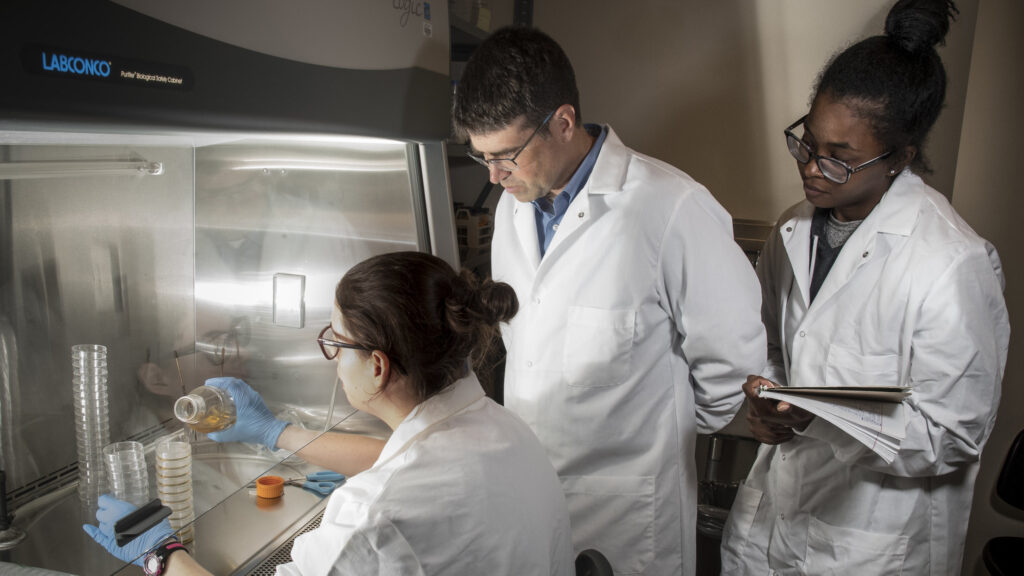
Scientists from UNC Greensboro have a new publication in the prestigious journal Gut on the role of the ATF4 gene in alcoholic liver disease.
The ATF4 gene is activated in mice liver cells in response to chronic alcohol exposure. In their new study, the researchers linked that gene activation to a form of mitochondrial dysfunction that contributes to alcohol-induced liver injury.
Their findings suggest that targeting the ATF4 gene – and the pathway of mitochondrial activity it affects – might one day help prevent or treat alcoholic liver disease.
For example, the researchers found that over-activating the TFAM gene – which the ATF4 gene normally suppresses – can protect mice from alcohol-induced mitochondrial dysfunction and alcoholic liver disease. They also confirmed the relationship between ATF4 activation and mitochondrial dysfunction in human livers, using tissue from patients with severe alcoholic liver disease.

Dr. Liuyi Hao of the UNCG Center for Translational Biomedical Research, or CTBR, was the lead author of the article. His co-authors included other CTBR research scientists, CTBR co-director Zhanxiang Zhou, and collaborators at the University of Illinois at Chicago and Johns Hopkins Medicine.
“We’re excited to be publishing our work in such a prestigious journal in gastroenterology and hepatology,” says CTBR co-director Zhou, who is also a professor in the Department of Nutrition.
With $5.9 million in current funding from the National Institutes of Health, Zhou’s research group focuses on fatty liver disease, in which excess lipids deposit in the liver due to alcohol abuse or obesity. Unchecked fatty liver disease can lead to inflammation of the liver (hepatitis), scarring (cirrhosis), and liver failure.
“One in 10 Americans have some form of liver disease,” Zhou says. “Mayo Clinic researchers recently challenged CDC statistics, placing liver disease as the 8th leading cause of American deaths.”
The UNCG Center for Translational Biomedical Research is located at the North Carolina Research Campus in Kannapolis. The campus houses a number of corporations, healthcare organizations, and universities that work together in a public-private partnership to better understand human health, nutrition, and agriculture. The CTBR focuses on the molecular mechanisms of disease pathogenesis and progression, biomarkers for diagnosis, and discovering novel interventions for the prevention and treatment of disease.
Article by Sangeetha Shivaji, Office of Research and Engagement



